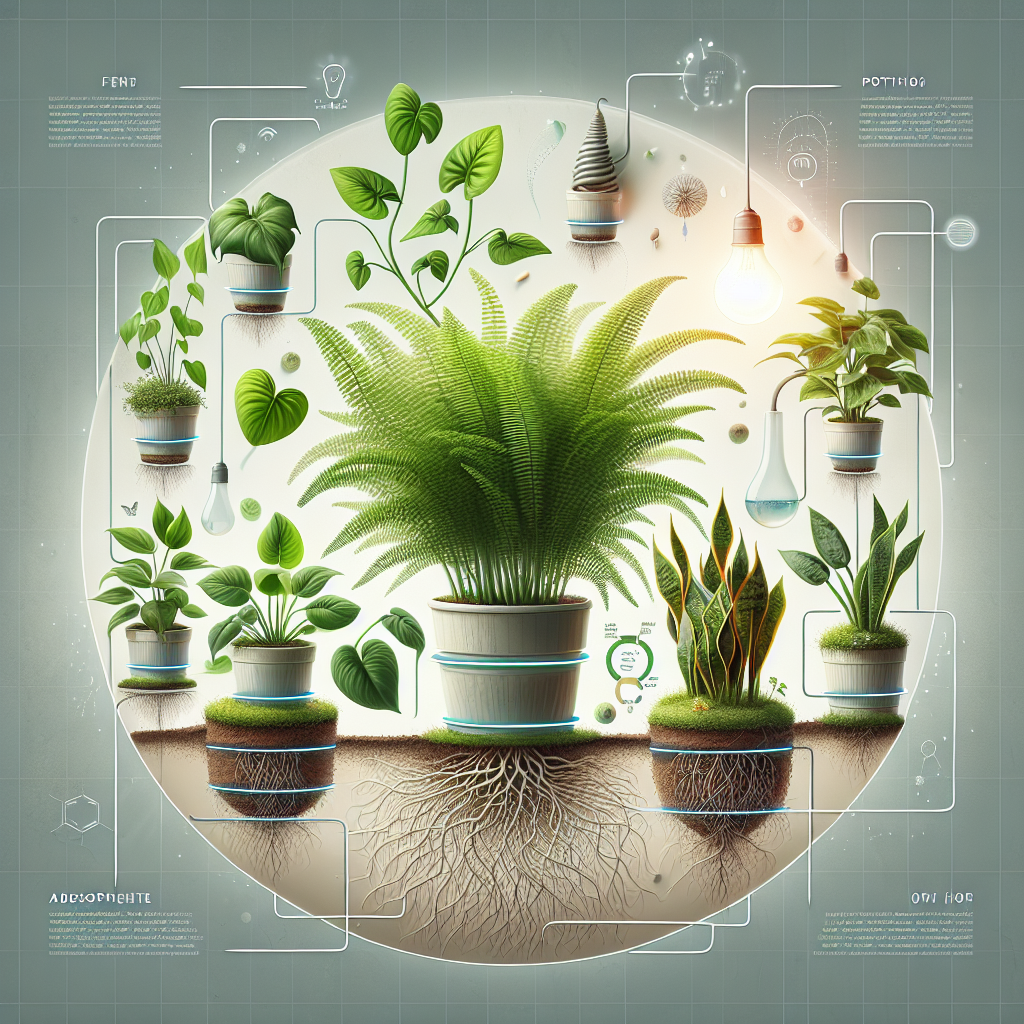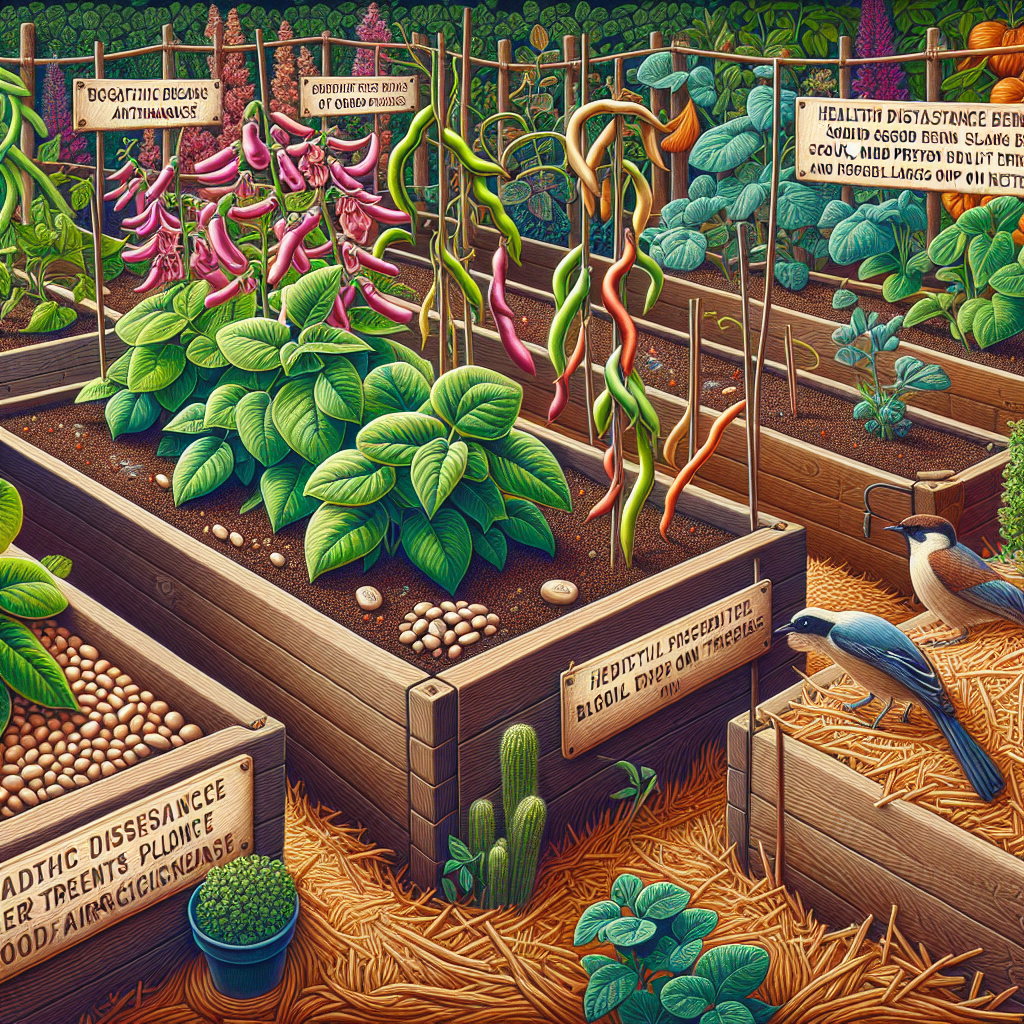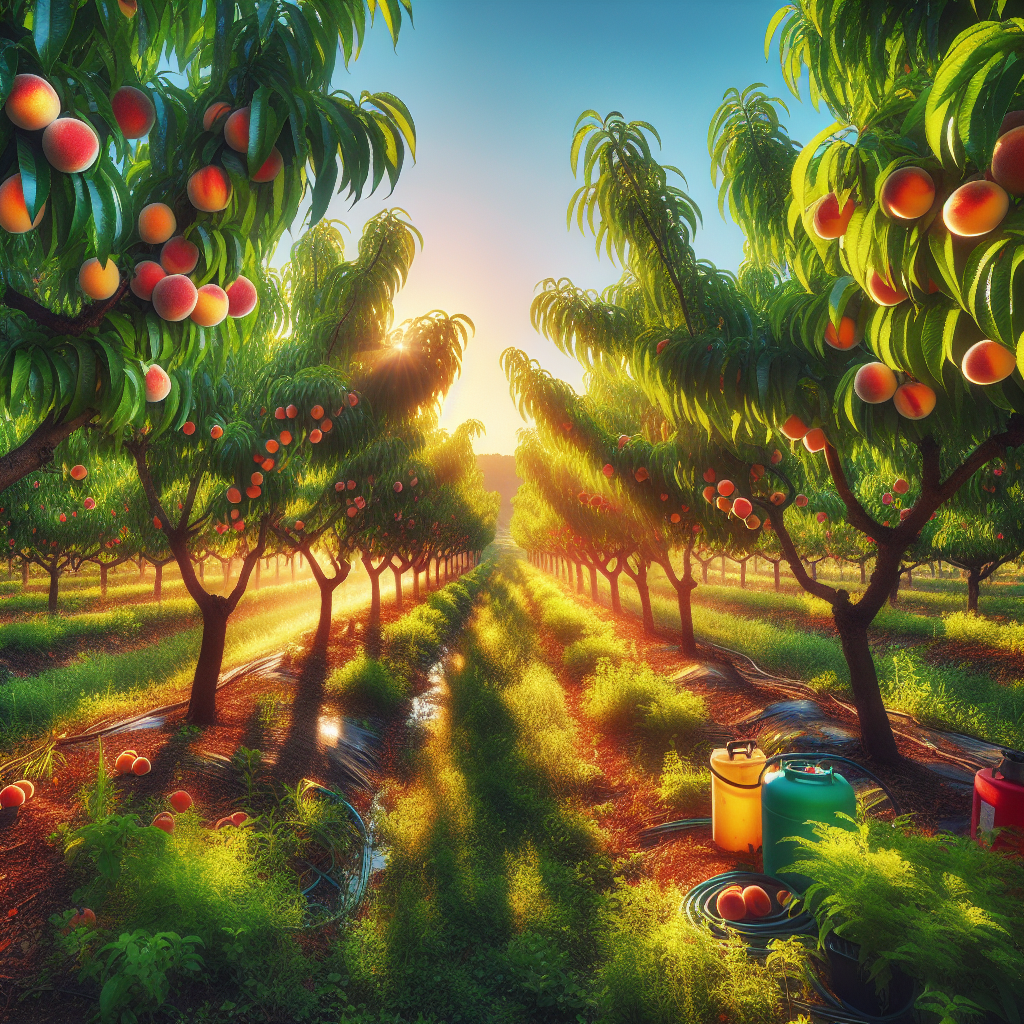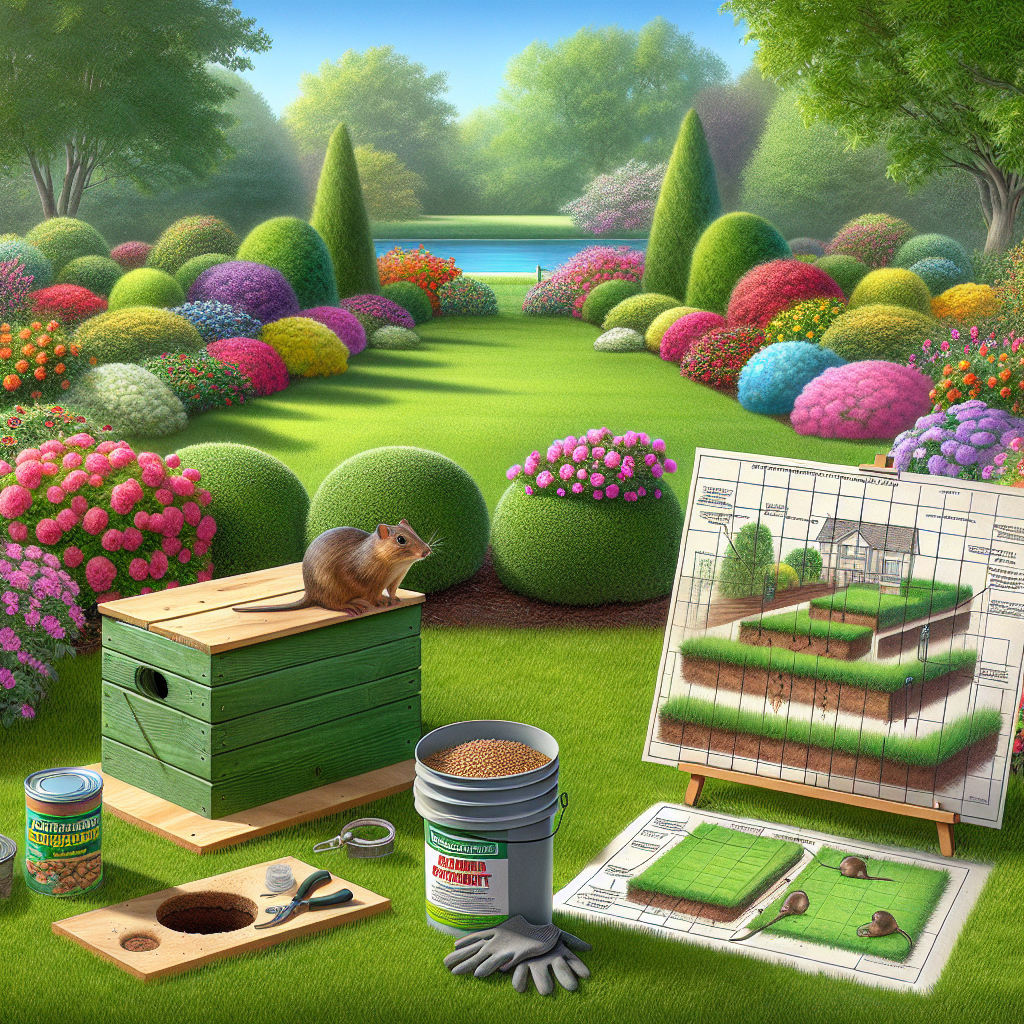The Science Behind Plant Growth Indoors
Updated June 25, 2024 at 6:17 am

Understanding Indoor Plant Growth Factors
Growing plants indoors can be profoundly rewarding and offer various health benefits, such as improved air quality and stress reduction. However, indoor plant care has its nuances, and understanding these can help your green friends thrive. Let’s dive deep into the science behind nurturing plants in indoor conditions, and touch upon some items that could aid in their growth.
Pet Friendly: Those with furry companions need to ensure that their plant choices and growth techniques do not endanger their pets. Certain plants can be toxic if ingested, so it’s critical to choose pet-friendly options.
Light Requirements: Light is the primary energy source for plants. The right amount and intensity can make a dramatic difference in how well your plants perform indoors. We’ll explore how to provide the optimal lighting setup for your indoor garden.
Watering: Overwatering or underwatering can lead to plant stress or death. Striking a balance is key, and we’ll guide you through understanding your plant’s hydration needs.
Humidity: Many plants have specific humidity requirements that might not align with your home’s natural climate. We’ll talk about how to manage and adjust indoor humidity for plant health.
Temperature: Stable temperatures are usually preferred by indoor plants, but some variance might be necessary for certain species. This section will cover how temperature affects plant growth and how to maintain an ideal environment.
Difficulty: Whether you are a novice or a green-thumbed expert, understanding the difficulty level of growing specific plants indoors will help you choose species that align with your experience and commitment levels.
Lighting the Way for Healthy Indoor Plants
One crucial element of plant growth indoors is lighting. Just as humans need a balanced diet to thrive, plants require the right type of light in appropriate amounts. When we talk about indoor lighting for plants, we mean both natural and artificial sources. Your window side might provide plenty of natural light, but what if it doesn’t? That’s when artificial light sources, such as LED grow lights, come into play.
A popular choice among indoor gardeners is the Roleadro LED Grow Light. It emits light in wavelengths that are optimal for indoor plant growth, closely mimicking natural sunlight. This light fixture is especially good for herbs and greens, which respond well to the blue spectrum it provides. According to numerous reviews, users have noted an improvement in their plant’s growth rate and overall health after using this product.
Pros:
- Energy-efficient LED technology
- Full spectrum light for different growth stages
- Easy to install and use
Cons:
- May not be suitable for large plants or areas
- Can generate a little heat despite being LED
Find This and More on Amazon
Water Wisdom for Flourishing Flora
Watering your indoor plants seems straightforward, but each type of plant has its specific hydration requirements. Too much water can lead to root rot, and too little can starve your plants of the vital moisture they need. It’s not just about quantity, either. The quality of water can impact plant health, with some plants sensitive to chemicals commonly found in tap water.
A savvy way to ensure your plants receive the proper amount of water is using a soil moisture meter. The XLUX Soil Moisture Meter is a reliable tool that eliminates the guesswork. By inserting this probe into the soil, you can get an instant reading that indicates whether it’s time to water or if you should hold off. User reviews report that it is an invaluable tool for maintaining plant health, preventing over and under-watering.
Pros:
- Simple to use with no batteries needed
- Accurate moisture readings help prevent overwatering
- Compact design for use with different pot sizes
Cons:
- Might not be durable enough for frequent, heavy use
- Readings can vary based on soil type
Find This and More on Amazon
Managing Humidity for an Indoor Oasis
To keep your indoor plants vibrant and healthy, managing the humidity levels is just as crucial as watering. Some tropical plants require a moist environment which can often be challenging to achieve, especially in drier climates or during winters when indoor heating systems are running.
One way to tackle this is by using a humidifier. The Levoit Ultrasonic Humidifier has earned accolades from plant enthusiasts for its performance in maintaining the right level of humidity. With features like an adjustable mist level and a large capacity reservoir, it makes controlling the environment around your plants a breeze. Reviewers often highlight how this device has revitalized their plants, especially those that are humidity-sensitive.
Pros:
- Large water tank allows for longer operation time
- Adjustable settings for tailored humidity control
- Quiet operation, making it ideal for use in any room
Cons:
- Requires regular cleaning to prevent mold and bacteria growth
- May be pricier than simpler humidifier models
Find This and More on Amazon
Temperature Tuning for Indoor Plant Environments
Most common houseplants originate from climates with consistent, warm temperatures. Therefore, recreating these conditions at home is key to success when growing plants indoors. Sudden temperature changes can shock plants, leading to dropped leaves or slowed growth, and even death in extreme cases.
While keeping your home in the right temperature range can be as simple as adjusting your thermostat, sometimes you may need to take additional measures. For instance, using a heating mat under your plants can provide them with a stable and gentle heat source. The VIVOSUN Durable Waterproof Seedling Heat Mat is often recommended by experts for its reliability and effectiveness. It gently warms the root area, improving germination and plant growth, which has been backed up by positive user reviews.
Pros:
- Increases germination and growth rates
- Water-resistant construction
- Comes in various sizes to fit multiple pot configurations
Cons:
- Needs to be used with caution to prevent overheating
- May not be necessary for all plant types
Find This and More on Amazon
Selecting the Right Soil and Fertilizers
Soil is the lifeblood of your plants — it provides support, nutrients, and oxygen to the roots. Indoor plants typically require a lighter, more porous soil mix than outdoor plants, allowing for better drainage and aeration. Choosing the right soil mix is vital in preventing waterlogging and providing your plants with the essential nutrients they need to flourish.
For those looking for a dependable soil mix, FoxFarm Ocean Forest Potting Soil is a top pick. It’s a well-aerated, nutrient-rich mix that promotes healthy root growth. This soil has earned rave reviews for its balanced pH and the fact that it comes ready to use right out of the bag, which gardeners appreciate for its convenience and effectiveness.
Pros:
- Rich in organic materials and beneficial microbes
- pH adjusted for optimal uptake of nutrients
- Great for a wide variety of indoor plants
Cons:
- Can be more expensive than other potting soils
- May not be the best choice for plants requiring low-nutrient soil
Find This and More on Amazon
Navigating Pest and Disease Control in Indoor Plants
It’s not just environmental conditions that play a role in the health of your indoor garden. Pests and diseases can sneak up on you and, if left unchecked, can wreak havoc on your plants. You might notice your plant’s leaves starting to spot, wilt, or perhaps the appearance of tiny insects. Before panic sets in, know that there are effective ways to manage these issues.
Neem oil is a natural pesticide that has been praised by gardeners for its effectiveness in controlling pests without harming the plant or the environment. The Organic Neem Bliss 100% Pure Cold Pressed Neem Seed Oil is a product that stands out for its quality and eco-friendly approach. Many reviews point to its effectiveness against a wide range of common houseplant pests while being gentle on the plants themselves.
Pros:
- Eco-friendly and non-toxic
- Effective against a broad spectrum of pests
- Can also help to prevent fungal diseases
Cons:
- Has a strong odor that some people may find unpleasant
- Oil can leave a residue on leaves if not properly diluted
Find This and More on Amazon
Mimicking Natural Environments for Indoor Plant Success
Each plant has its origin, and it brings with it a set of conditions it thrives in. Mimicking a plant’s natural environment as close as possible in your home can dramatically improve its growth and health. This involves being attentive and sometimes creative – using tools and implements to create the ideal conditions for each plant species.
For example, orchids thrive in a bark mix that emulates their natural tree-dwelling habitats, while cacti and succulents prefer a sandy mix to replicate arid conditions. It’s said that people have been successful in growing robust and blooming orchids indoors using the rePotme Orchid Potting Mix. This blend provides the perfect structure for orchid roots to access air and water properly, as necessary for their delicate systems.
Pros:
- Specialized blend for orchids
- Encourages air circulation and proper drainage
- Phalaenopsis orchid enthusiasts highly recommend it
Cons:
- May dry out more quickly than standard potting mixes
- Some orchid species might require different mix components
Find This and More on Amazon
Expert Tips for Repotting and Transplanting
Repotting your plants is a significant aspect of indoor plant care, yet it can be daunting for many. It is essential to understand when a plant needs to be repotted and how to do it properly to prevent transplant shock and to promote healthy growth. Typically, you should consider repotting when roots are seen creeping out of the drainage holes, or growth has slowed down significantly.
Using the right pot and soil is crucial when repotting. If you’re not sure what to choose, the Bloem Terra Plastic Pot Planter is a trusted option among indoor gardeners. It comes with excellent drainage options and durable material, accommodating a wide range of indoor plant species. Users love the simplicity and functionality it provides, making transplanting a less stressful experience for both the plant and the gardener.
Pros:
- Durable plastic construction provides longevity
- Available in a variety of sizes
- Designed with efficient drainage
Cons:
- Plastic pots may not have the same aesthetic appeal as ceramic or terra cotta
- Lightweight plastic may tip over with top-heavy plants
Find This and More on Amazon
Maintaining a Connection with Nature Indoors
In summary, caring for indoor plants can seem complex, but remember it’s all about replicating and managing the best aspects of their natural habitats. From light and water to soil and temperature, every detail comes together to create a harmonious environment for your plants to flourish. As you gain experience, you’ll fine-tune these aspects and find what works for your indoor garden.
Gardening is not just about the technicalities; it also offers a way to foster a deeper connection with nature. As you tend to your plants, observe their responses, and adjust your care routine, you’re engaging in a rewarding dialogue with the living world. So go ahead, get your hands dirty, and enjoy the growth – both your plants’ and your own as a mindful, attentive indoor gardener.
Shop more on Amazon

